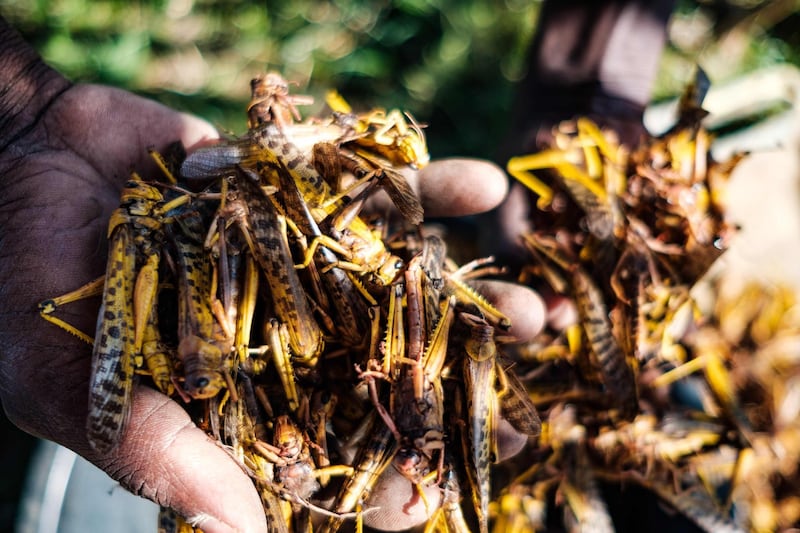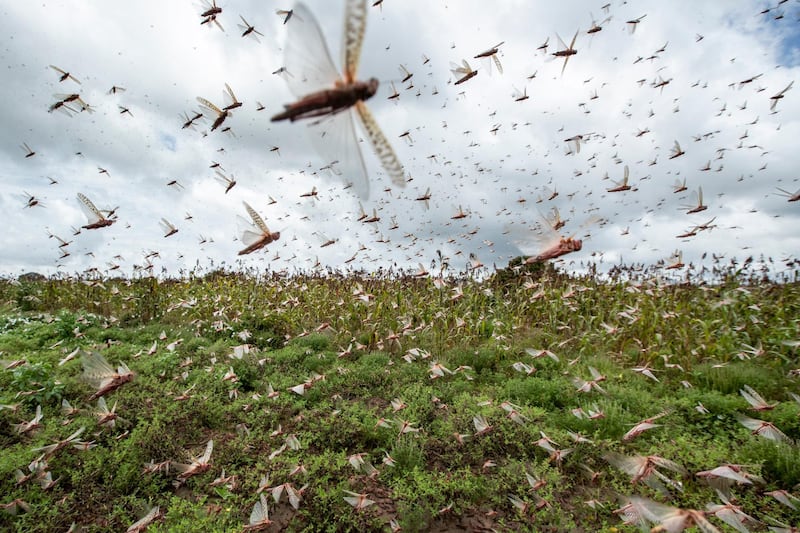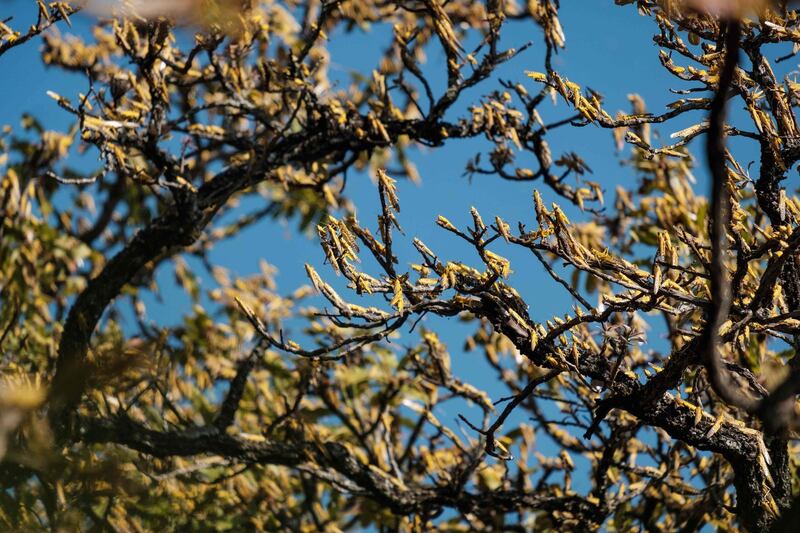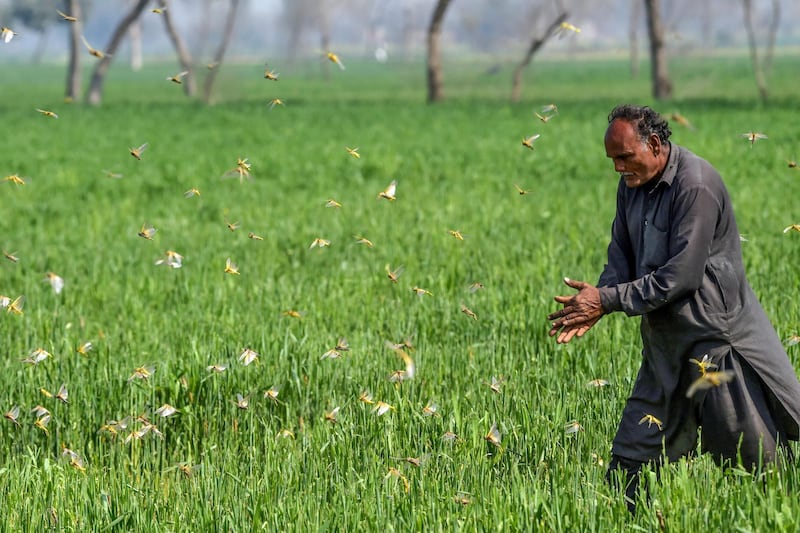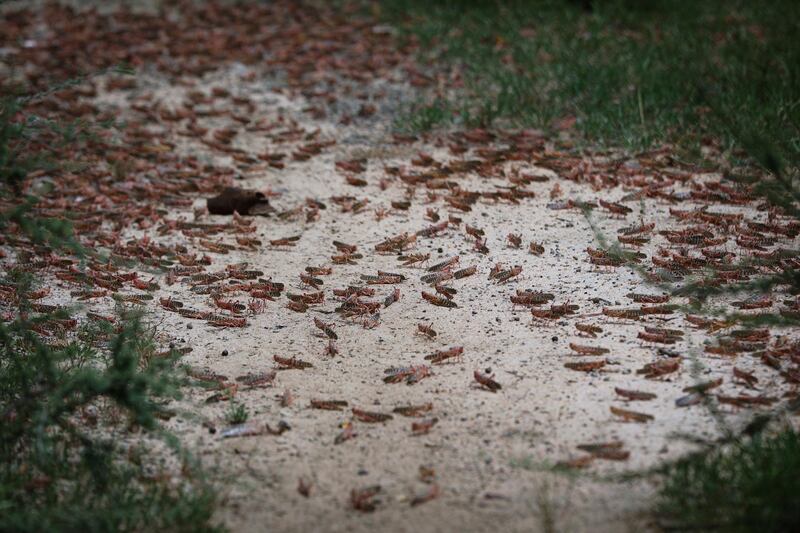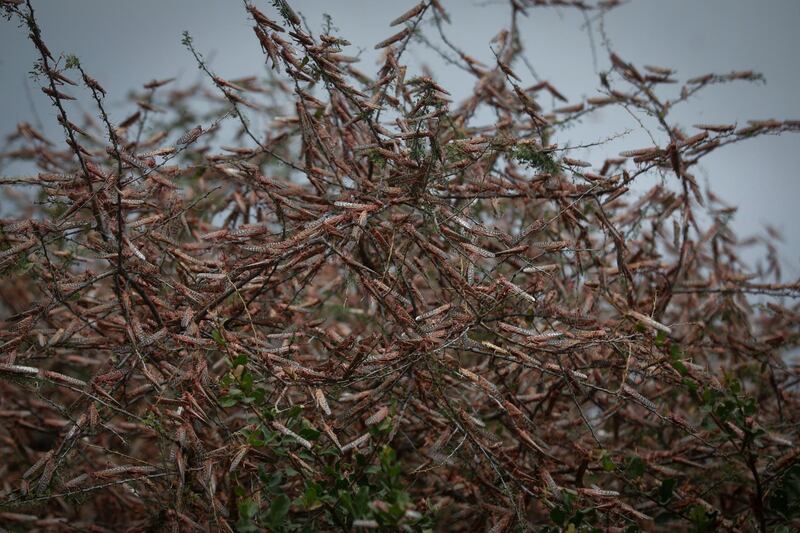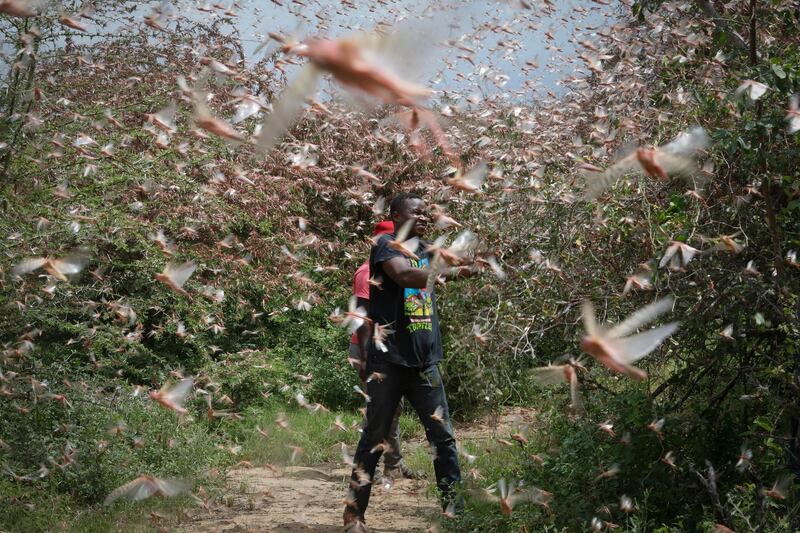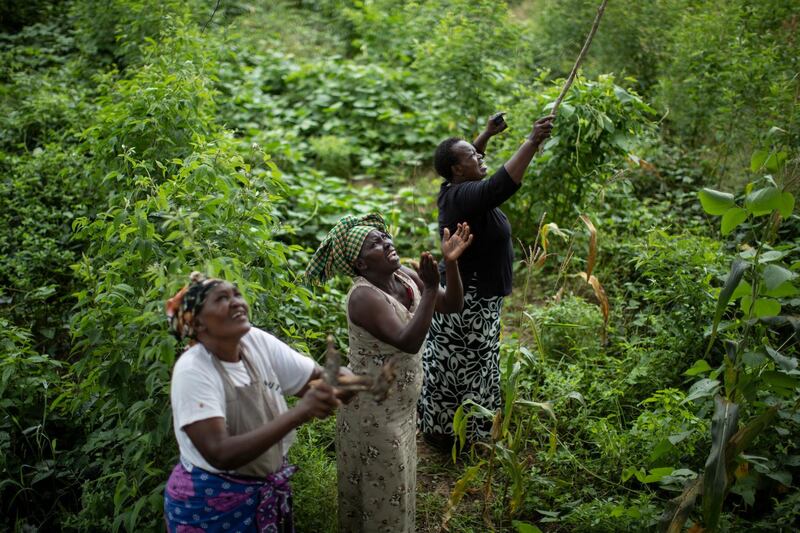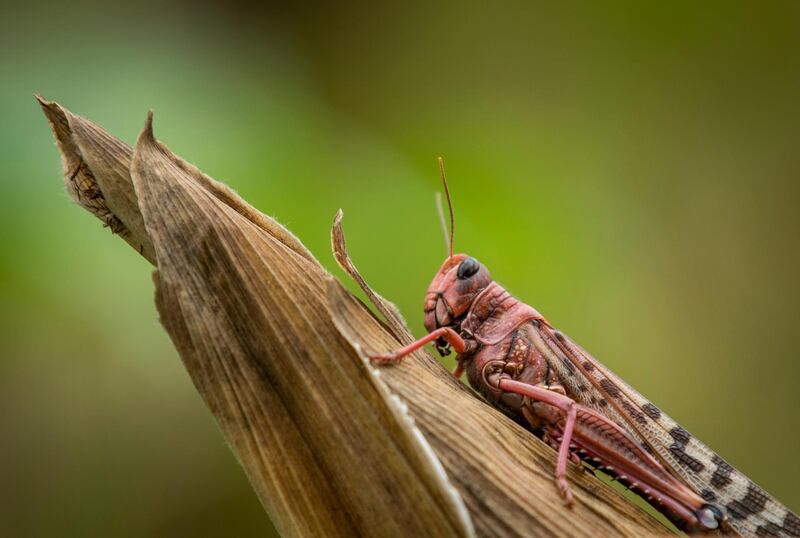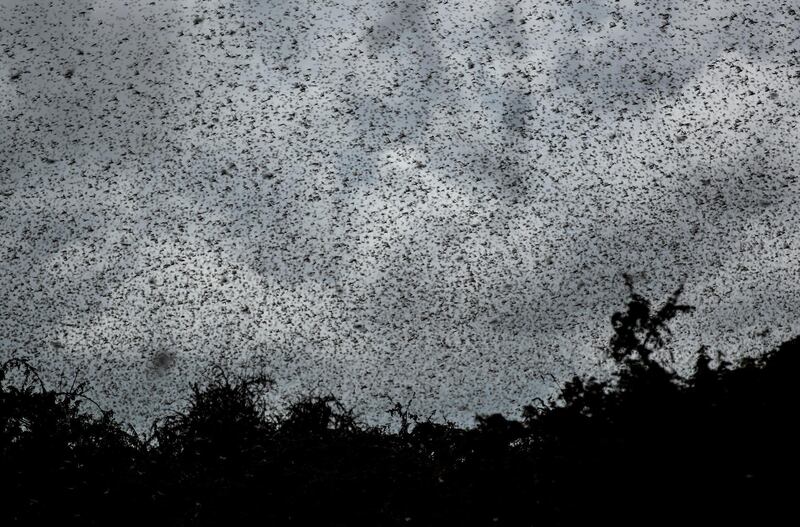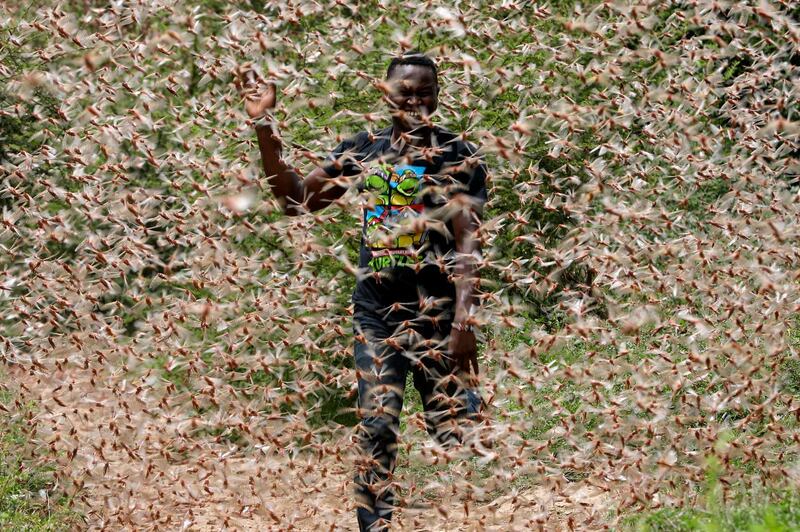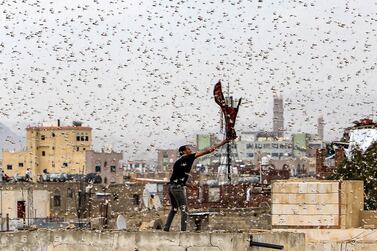Locusts by the millions are nibbling their way across a large part of Africa in the worst outbreak some places have seen in 70 years.
Reseachers say the explosion in population is another effect of a changing climate.
The swarms of desert locusts hang like shimmering dark clouds on the horizon as they strip the countryside in what are already some of the world’s most vulnerable countries, including Somalia.
The whirring insects have destroyed hundreds of square kilometres of vegetation and forced people in some areas to wade through them.
“A typical desert locust swarm can contain up to 150 million locusts per square kilometre,” says East African regional body the Intergovernmental Authority on Development.
“Swarms migrate with the wind and can cover 100 to 150 kilometres in a day. An average swarm can destroy as much food crops in a day as is sufficient to feed 2,500 people.”
Alarm and exasperation mix with curiosity as people try to dissuade the locusts by shouting, waving pieces of clothing or banging on sheets of corrugated metal.
In rural Kenya, men dashed along a path waving leafy branches at the insects and laughing in astonishment.
“These things came to us from Ethiopia and are destroying everything along the way, including our farm,” said Esther Ndanu, in the Kenyan village of Ngomeni.
“We want the government to move very quickly to bring the plane to spray them with the medicine that can kill them, otherwise they will destroy everything.”
Local official Johnson Mutua Kanandu said: “I am seeing a catastrophe.”
An “extremely dangerous increase” in locust swarm activity has been reported in Kenya, East Africa's economic centre, regional authorities reported last week.
One swarm measured 60km by 40km in the country’s north-east, the development authority said.
Kenya has not had a locust outbreak such as this in 70 years, Rosanne Marchesich, emergency response leader with the UN Food and Agriculture Organisation, said on Wednesday.
“It’s the worst that we’ve seen in Ethiopia and in Somalia in 25 years,” Ms Marchesich said.
Millions of people in both countries already cope with the constant risk of drought or flooding, as well as deadly unrest in Ethiopia and extremist attacks in Somalia.
Now South Sudan, struggling to emerge from a civil war, and Uganda are bracing for the locusts’ arrival.
“Uganda has not had to deal with a locust infestation since the 1960s so there is concern about the ability for experts on the ground to be able to deal with it without external support,” Marchesich said.
“And in a country like South Sudan, already 47 per cent of the population is food-insecure.”
This week, Ugandan Prime Minister Ruhakana Rugunda told agriculture authorities that "this is an emergency and all agencies must be on the alert," the government-controlled New Vision newspaper reported.
